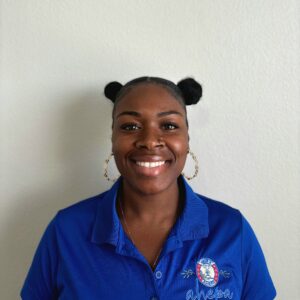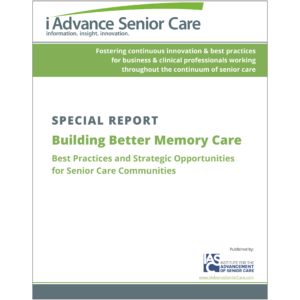Outwit and outsmart pests
When it comes to attracting residents, the last ones you want to move into your long-term care (LTC) facility are the multilegged kind. Pests like flies, cockroaches, ants, and rodents can be drawn to your facility because it offers essentials for survival: food, water, shelter, and comfortable temperatures. If they go unnoticed, pests can spread diseases and cause structural damage to the building. Their presence also offends residents and their families, harming your facility’s rep-utation for excellence. The best way to manage infestations and prevent future problems is to implement an Integrated Pest Management (IPM) program.
IPM programs treat the symptoms and causes of pest infestations. Relying on techniques such as stringent sanitation, facility maintenance, and accurate documentation, IPM removes the aspects of a facility that make it attractive to pests and reduces the need for traditional chemical treatments. Less toxic and more targeted, IPM treatments help minimize any potential hazards to residents, staff, and the environment.
But before you can effectively implement an IPM program in your facility, you need to know the multiple ways pests gain access to your building. Work with a pest management professional to implement the seven steps of an effective IPM program:
1. Inspection. Your LTC facility is unique. Its environment constantly changes, so regular inspection is the key to staying on top the situation. By identifying and monitoring “hot spots,” or areas likely to draw pests, including storage areas, resident rooms, dining rooms, and food preparation areas, pest infestations may be prevented before they gain a foothold and cause extensive damage.
In addition, inspect for pest entry points on the exterior of your building. Besides the obvious access through open doors and windows, pests can squeeze through tiny cracks and crevices in a building’s façade (figure 1). In fact, mice can gnaw through holes as small as a dime. Many pests also hitchhike in on employees’ shoes and clothing or with product shipments. Low-hanging foliage and shrubbery along the outside of a building allows birds and insects entry. Since the general weathering of your building can create new cracks, regularly look for new entry points during inspections.
Even small openings around water pipes create an access for pests to enter the building. Seal openings
Conduct regular inspections with pests in mind. Although the kitchen floor is clean and shows no signs of a pest presence, look under, behind, and on top of shelves and equipment where pests often hide unnoticed. For example, the area behind a leaking soda fountain machine can quickly become home to fruit flies if the machine is not immediately repaired (figure 2). The frequency of inspection depends on the size and other unique characteristics of a facility, but bimonthly inspections are most common.
Moisture from leaking equipment will keep pests lingering. Clean spills and fix machines quickly
2. Preventive action. When a weak spot in your building is discovered, eliminate it before it leads to an infestation. Your pest management professional can help you implement a number of preventive methods, including stepping up your sanitation program or correcting maintenance issues. These simple, proactive actions save a great deal of effort in the long run because infestations are much more difficult to manage once they start. Include the following easy-to-implement preventive actions in your IPM program:
Seal off all potential pest entry points to your facility. Make sure every window shuts completely and remind staff members to keep doors shut as they are pass through storage areas, entrances, and laundry facilities. Install door sweeps and weather stripping to block entry along the tops, sides, and bottoms of doors. Seal cracks and openings with a weather-resistant sealant. Ask your pest management professional for assistance with incorporating copper mesh or steel wool into the sealant, which prevents rodents from biting through.
Remove fluorescent lights, which attract pests, from the building’s exterior. Instead, mount sodium vapor lights around the building and use the fluorescent lights in the parking lot to draw pests away from the building.
Control vegetation. Monitor trees, bushes, and shrubbery on the exterior, and keep their growth under control. Vegetation should never touch the building, so cut back all foliage and low-hanging branches at least two feet from the façade.
Pests thrive in dirty, dusty, and damp conditions, but an effective sanitation program gives them less reason to enter your facility. Clean all spills immediately and make sure your staff knows their roles in the sanitation program.
3. Identification. Since treatment options are targeted to the type of pest, correct identification is an integral part of your elimination efforts. Although they may look alike, pests act and respond differently to treatment. Know exactly what pest you’re dealing with and target management techniques accordingly.
IPM requires a high standard of expertise in pest biology and behavior, so rely on your pest management professional for guidance on pest identification.
4. Analysis. Once problematic pests are accurately identified, determine what is attracting them and where they are gaining entry. Stricter sanitation efforts might be necessary if your building provides pests with food or water. Infestations often start in laundry rooms, kitchens, and storage rooms, so carefully evaluate the conditions in these areas (figure 3). In other cases, lighting or airflow could encourage the infestation.
Grease buildup on kitchen appliances such as stoves and ovens will attract pests. Regular sanitation will keep your kitchen sparkling and pest-free
During the analysis stage, work with your pest professional to dig deeper into the cause and source of the infestation. For example, if your facility has been renovated or built on a previously occupied site, preexisting conditions could affect pest presence. In one case, a facility was experiencing a phorid, or humpback, fly infestation in its kitchen drains. It was determined that the flies actually weren’t breeding inside the drains, but were breeding underground and entering the drainage system through a broken pipe. This careful analysis helped to get to the root of the problem and apply the appropriate treatments.
5. Treatment selection. With more treatment options, especially nonchemical, available than ever before, proper analysis of pest issues and professional guidance are critical. IPM emphasizes several nonchemical options instead of or in conjunction with traditional chemical treatments. These options include:
exclusion, which physically builds pests out of the building;
trapping and physical removal of pests;
landscaping modification;
waste management; and
moisture control.
If a nonchemical alternative is not available, the approach relies on targeted applications beginning with the least volatile formulations, such as baits or gels. Your pest management professional can select the best treatment combinations available.
6. Monitoring. Pest management does not end with treatment. Instead, protect against future infestations by monitoring sensitive areas. Be on the lookout for changes to your facility, as well as any signs of pest activity. Employee cooperation helps, since your pest management professional relies on regular updates to deliver the best possible service. Advise employees to immediately report sightings and signs of pest presence. Many service providers provide on-site staff education on their roles in the IPM program.
7. Documentation. Regularly document your efforts to evaluate your IPM program’s efficacy. With your pest management professional, review service records, pest activity reports, corrective action reports (sanitation, housekeeping, building maintenance, etc.), pesticide usage reports, and other documentation for accuracy. Keep a thorough documentation system and use records like pest trend logs to anticipate and help prevent potential problems.
The best IPM programs incorporate partnership. Your pest management professional relies on the cooperation of your entire staff, and teamwork and communication help ensure the program’s success. Educate your employees on IPM and train them on the proper response to an infestation. Open communication between you and your pest management professional is also imperative, with regular dialogue trickling down to all employees and maintenance professionals. With a smart IPM program in place, you’ll outwit pests and outlast the competition.
Zia Siddiqi, PhD, BCE, is Director of Quality Systems for Orkin, Inc. A board-certified entomologist with more than 30 years in the industry, Dr. Siddiqi is an acknowledged leader in the field of pest management.
For more information, phone (800) 675-4666 or visit https://www.orkincommercial.com. To send your comments to the author and editors, e-mail siddiqi1107@nursinghomesmagazine.com.
I Advance Senior Care is the industry-leading source for practical, in-depth, business-building, and resident care information for owners, executives, administrators, and directors of nursing at assisted living communities, skilled nursing facilities, post-acute facilities, and continuing care retirement communities. The I Advance Senior Care editorial team and industry experts provide market analysis, strategic direction, policy commentary, clinical best-practices, business management, and technology breakthroughs.
I Advance Senior Care is part of the Institute for the Advancement of Senior Care and published by Plain-English Health Care.
Related Articles
Topics: Articles , Facility management , Operations











